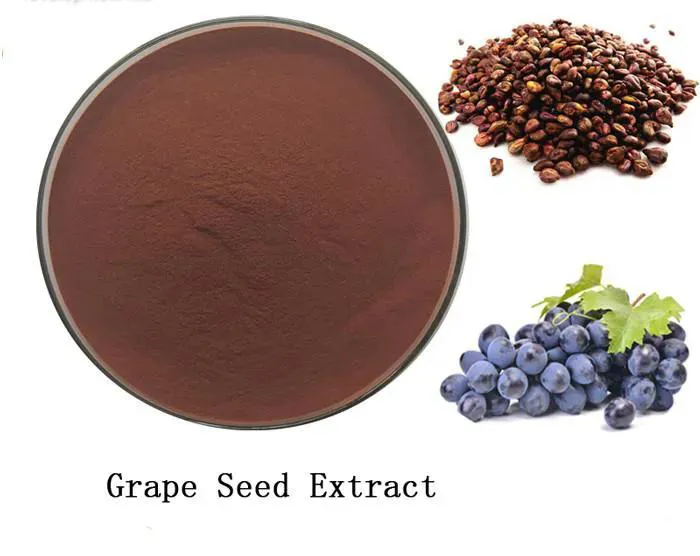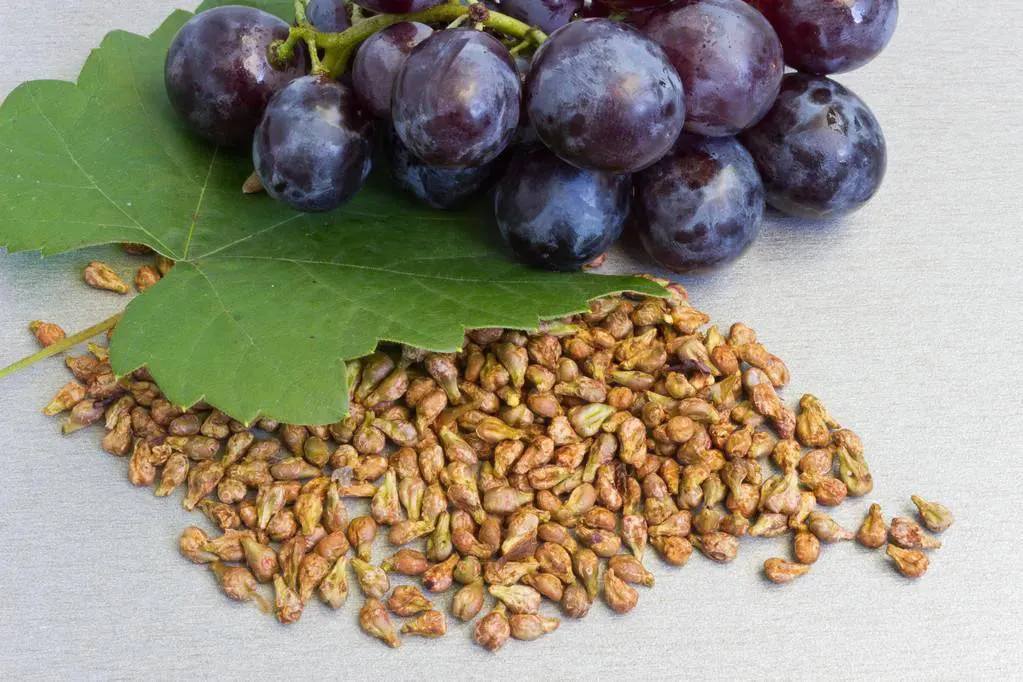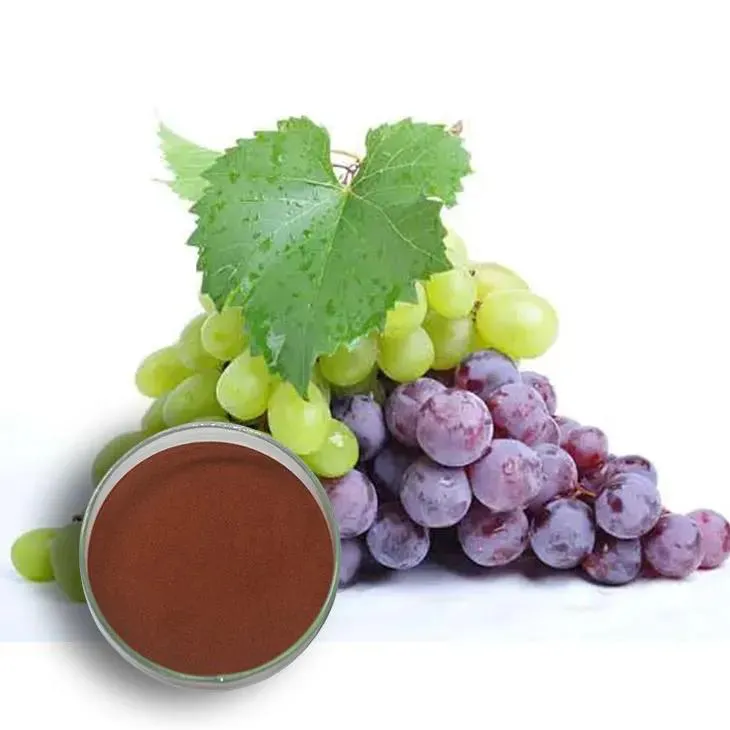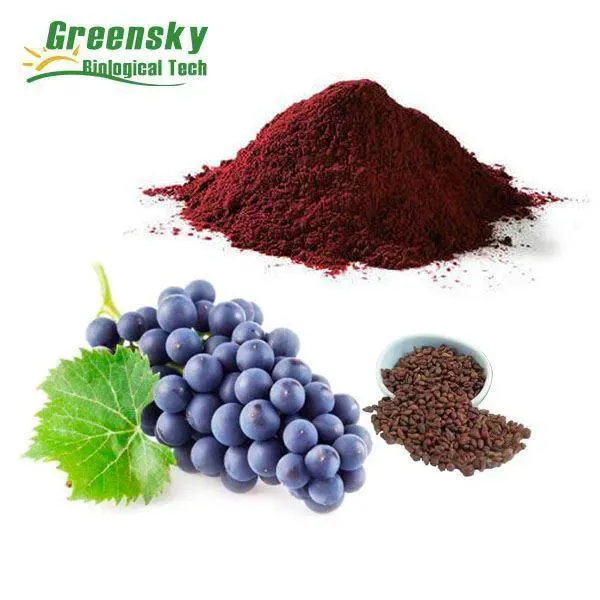- 0086-571-85302990
- sales@greenskybio.com
Natural Antioxidants at Home: How to Make Grape Seed Extract
2024-07-17

Introduction
Antioxidants play a crucial role in maintaining our health. They help combat oxidative stress, which is linked to various diseases and the aging process. Grape Seed Extract is a powerful natural antioxidant source that can be made at home. In this comprehensive guide, we will explore the significance of Grape Seed Extract as an antioxidant and walk you through the simple process of making it at home.

The Significance of Grape Seed Extract as a Natural Antioxidant
1. Rich in Proanthocyanidins
- Grape seed extract is known for its high content of proanthocyanidins. These are a type of flavonoid that has strong antioxidant properties.
- Proanthocyanidins can scavenge free radicals in the body, preventing them from causing damage to cells, DNA, and proteins.
- It may support heart health by reducing inflammation and improving blood vessel function. Studies have suggested that the antioxidants in grape seed extract can help lower blood pressure and cholesterol levels.
- For skin health, it can protect against UV - induced damage and promote collagen synthesis. This may lead to a reduction in wrinkles and improved skin elasticity.
- There is also evidence that grape seed extract may have anti - cancer properties, although more research is needed in this area. It may help prevent the growth and spread of cancer cells by inhibiting oxidative stress - related pathways.

Materials Needed for Making Grape Seed Extract at Home
1. Grape Seeds
- You can obtain grape seeds from fresh grapes. Choose grapes that are free from pesticides if possible. Organic grapes are a great option.
- The amount of grape seeds you need will depend on how much extract you want to make. As a general rule, start with a cup of grape seeds for a small batch.
- Common solvents used for extracting grape seed extract are alcohol (such as vodka or ethanol) or glycerin. Alcohol is a more effective solvent for extracting the active compounds from the grape seeds.
- If you choose to use alcohol, make sure it is of high purity. Vodka with a high alcohol content (around 40% - 50%) is a suitable choice.
- Glycerin can be used as a non - alcoholic alternative, especially if you plan to use the extract for topical applications or if you prefer to avoid alcohol.
- A blender or food processor will be needed to grind the grape seeds into a fine powder. This helps to increase the surface area of the seeds, allowing for better extraction.
- You will also need a glass jar with a tight - fitting lid. This is where the extraction process will take place.
- A strainer or cheesecloth is required to separate the liquid extract from the solid grape seed residue after the extraction process.

The Process of Making Grape Seed Extract at Home
Step 1: Prepare the Grape Seeds
- Remove the seeds from the grapes. You can do this by cutting the grapes in half and gently squeezing out the seeds.
- Rinse the seeds thoroughly under running water to remove any remaining grape pulp or debris.
- Allow the seeds to dry completely. This can take a few hours or overnight. Make sure they are completely dry before proceeding to the next step.
- Place the dried grape seeds in a blender or food processor. Grind them into a fine powder. Be careful not to over - heat the seeds during grinding, as this may damage some of the beneficial compounds.
- If you are using alcohol as the solvent:
- Measure out a sufficient amount of alcohol. A general ratio is about 1:3 (one part grape seed powder to three parts alcohol). For example, if you have 100 grams of grape seed powder, you would use 300 milliliters of alcohol.
- Place the ground grape seed powder in the glass jar. Pour the alcohol over the powder.
- Seal the jar tightly with the lid. Shake the jar gently to mix the powder and the alcohol thoroughly.
- If you are using glycerin as the solvent:
- The ratio of grape seed powder to glycerin can be similar to that of alcohol, such as 1:3. However, glycerin is more viscous, so you may need to stir the mixture more thoroughly.
- Add the ground grape seed powder to the glass jar and pour the glycerin over it. Stir well to ensure that all the powder is coated with the glycerin.
- Place the sealed jar in a cool, dark place. Let the mixture steep for at least two weeks. During this time, the solvent will extract the beneficial compounds from the grape seeds.
- Shake the jar gently every few days to ensure that the extraction process is evenly distributed.
- After the steeping period, it's time to separate the liquid extract from the solid residue. Place a strainer or cheesecloth over a clean container.
- Pour the contents of the jar through the strainer or cheesecloth. Gently press the solids to extract as much liquid as possible.
- The liquid that is collected is your grape seed extract.

Storing and Using Grape Seed Extract
1. Storage
- Store the grape seed extract in a dark glass bottle. This helps to protect it from light, which can degrade the antioxidants over time.
- Keep the bottle in a cool, dry place. A pantry or a cellar is a good location. If stored properly, the extract can last for several months.
- If you are using alcohol - based extract for internal use, it is important to dilute it. A common dilution ratio is 1:10 (one part extract to ten parts water or juice). Start with a small amount and gradually increase the dose if needed.
- You can take the diluted extract orally, once or twice a day. However, it is always advisable to consult a healthcare professional before starting any new supplement regimen.
- The non - alcoholic glycerin - based extract can be used topically for skin health. Apply a small amount of the extract directly to the skin and gently massage it in.
- It can be used as a natural ingredient in homemade skincare products such as creams, lotions, or serums.
Precautions and Considerations
1. Allergic Reactions
- Some people may be allergic to grapes or grape products. Before using grape seed extract, test a small amount on your skin to check for any allergic reactions. If you experience any itching, redness, or swelling, do not use it.
- Grape seed extract may interact with certain medications, such as blood - thinning drugs. If you are taking any medications, consult your doctor before using grape seed extract to avoid any potential adverse effects.
- When making your own grape seed extract at home, ensure that the grapes are of high quality and free from contaminants. If you are using alcohol, make sure it is of a suitable purity for consumption or extraction purposes.
Conclusion
Making your own grape seed extract at home is a simple and rewarding process. It allows you to harness the power of this natural antioxidant source for various health and skincare benefits. However, it is important to follow the proper procedures and take necessary precautions. By doing so, you can enjoy the advantages of grape seed extract in a natural and cost - effective way.
FAQ:
What are the benefits of grape seed extract as a natural antioxidant?
Grape seed extract is rich in polyphenols, especially proanthocyanidins. These compounds are powerful antioxidants. They can help combat free radicals in the body, which are associated with various health problems such as aging, heart disease, and some cancers. Antioxidants also support the immune system, reduce inflammation, and may contribute to better skin health by protecting against oxidative stress.
Is it safe to make grape seed extract at home?
When done correctly, making grape seed extract at home can be relatively safe. However, it's important to ensure that all equipment used is clean and sterile to prevent contamination. Also, be cautious when handling any chemicals or substances during the extraction process. If you have any allergies or sensitivities, it's advisable to consult a healthcare professional before using the homemade extract.
What materials do I need to make grape seed extract at home?
You will need grape seeds, of course. You also need a blender or grinder to break down the seeds, a solvent such as vodka or ethyl alcohol (food - grade), a glass container with a tight - fitting lid for the extraction process, and some filtering materials like cheesecloth or a coffee filter to separate the liquid extract from the solid parts of the seeds.
How long does it take to make grape seed extract at home?
The extraction process can take anywhere from a few days to a couple of weeks. It depends on factors such as the method used, the type of solvent, and the temperature. Generally, the longer the extraction time, the more concentrated the extract will be. But it's important to monitor the process regularly to ensure the quality of the final product.
Can I use the homemade grape seed extract in the same way as commercial products?
While the basic properties of the homemade and commercial grape seed extracts are similar, there may be some differences. Commercial products often go through more standardized processing and quality control. However, you can use your homemade extract in a similar way, such as taking it orally for its antioxidant benefits. But always start with a small amount to test for any potential adverse reactions.
Related literature
- The Antioxidant Activity of Grape Seed Extract: A Review"
- "Grape Seed Extract: Composition, Antioxidant Properties and Applications"
- "Home - made Natural Antioxidants: The Case of Grape Seed Extract"
- ▶ Hesperidin
- ▶ citrus bioflavonoids
- ▶ plant extract
- ▶ lycopene
- ▶ Diosmin
- ▶ Grape seed extract
- ▶ Sea buckthorn Juice Powder
- ▶ Beetroot powder
- ▶ Hops Extract
- ▶ Artichoke Extract
- ▶ Reishi mushroom extract
- ▶ Astaxanthin
- ▶ Green Tea Extract
- ▶ Curcumin Extract
- ▶ Horse Chestnut Extract
- ▶ Other Problems
- ▶ Boswellia Serrata Extract
- ▶ Resveratrol Extract
- ▶ Marigold Extract
- ▶ Grape Leaf Extract
- ▶ blog3
-
Andrographis Paniculata Extract Powder
2024-07-17
-
Citrus Aurantium Extract
2024-07-17
-
Plantain extract
2024-07-17
-
Hedyotis Diffusa Extract
2024-07-17
-
Troxerutin
2024-07-17
-
Curcumin
2024-07-17
-
Curcumin Extract
2024-07-17
-
White Peony Extract
2024-07-17
-
Red Date Extract
2024-07-17
-
Tormentil Extract
2024-07-17





















